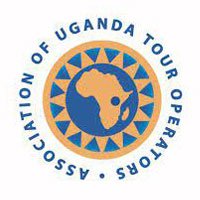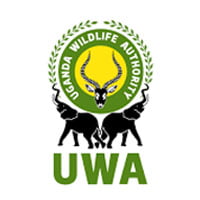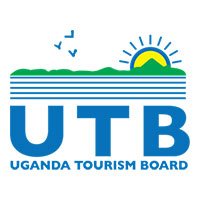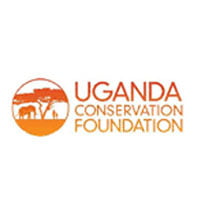Uganda Traditional dances: One sure way to experience Uganda’s rich cultural diversity is via dance. Uganda has more than 50 subcultures and dance is a great way for the various people to keep links to the traditions of their fathers and grandfathers. We are going to take a look at the top cultural dances in Uganda.
Various traditional dances signify culturally important events and emotions of love, sorrow, joy, and excitement. The dances are different in each of the respective regions of the country. These folk songs and dances represent the way of living, beliefs, and norms.
There a quite a number of these dances given this broad spectrum but here are a few most common dances across the country. You can witness (and participate) any of these dances while you are on a community visit in the various parts of Uganda.
1. Ekitaguriro Dance
This is a dance performed by the Banyankore. The Banyankore are from Ankole land, found in the Western part of Uganda. This originates from the Nkore or Ankole kingdom which is one of the oldest traditional dynasties in Uganda. It was created after of merging the Nkore kingdom with the smaller chiefdoms of Sheema, Buhweju, and Igara. The Ankole kingdom was subdivided into two factions, the Bahima (nobility and pastoralists) and the Bairu (agriculturalists and peasants).
Ekitaguriro is a dance performed by both men and women. They use it to tell stories, communicate vital cultural information, good harvests as well as a celebrate fundamental life changes like birth and marriage but mostly to show appreciation for their cows.
The men step from one leg to another imitating the back-and-forth movement the cows make when walking and the women spread their hands across and above their heads in the representation of the long-horned cattle and majestically sway from side to side in unison.
The dance is performed whilst wearing the Banyankore traditional dancewear known as ‘Bitambi’ or ‘lessu’ (wrapper) which is tied tightly around their waist and another lighter cloth around the shoulders complemented by several African-themed jewellery for the women. The men add shackle-like beads to their ensemble whose basic role is to draw attention to the foot movements and compliment the sounds of the ‘Kitaguriro dance’.
You can experience the Kitaguliro dance around the areas of greater Mbarara and Bushenyi in southwestern Uganda. Cultural visits can be organised as part of your ongoing safari. To mix up the wonderful wildlife and culture of the region.
2. Acholi Traditional Dances
I use this title because the Acholi people have 8 different traditional dances for different occasions and reasons. The Acholi people are found in the Nothern part of Uganda and they speak the Luo language.
Acholi are a tribe of people who still deeply practice their culture with the women taking care of agriculture and the men the livestock. Music in Acholi-land was and is used to transfer cultural knowledge through generations. I will only highlight the most common types.
Larakaraka dance
Also known as the ‘courtship dance’. In pre-colonial Acholi, young men were allowed to showcase their dance skills in an attempt to get a marriage partner.
This dance is still performed at traditional weddings to carry a torch for the old custom. The men wear rooster feathers on their heads and carry calabashes – which they rhythmically shake and pat with small saches. The women mostly use their lower bodies shaking the hips and waist often frantically to show off their femininity. The Larakaraka dance is the most common Acholi dance.
Otole dance
The Otole dance is also known as the ‘war dance’. Otole dance played the role of preparing and inculcating the young Acholi men on what to expect from fights.
The men wear cock feathers on their heads and carry shields and spears to perform mock fights (combat formations and defensive fighting), and victory dances. This dance represents the huge role men played in Acholi history for the protection of their territories, women and children. It was intended to teach responsibility.
3. Nankasa, Baakisiimba, Muwogola
This is a traditional folk dance that originated from the Buganda kingdom. Buganda is comprised of the Baganda people in the Central region of Uganda.
Quite an interesting story actually, the dance was a result of one Kabaka of Buganda kingdom who got ‘drunk’ from the local drink ‘tonto’ or ‘omwenge’ made from bananas. As he danced out of happiness, he was joined by the people around him and has since been a celebratory dance among the Baganda people.
Mbaga dance
Also traditionally practised by the Baganda tribe is the Mbaga dance. Normally performed by a woman who has reached the age of 18 and is being prepared for future marriage.
In this dance, topics on how to be a good wife, birthing and taking care of children, managing the house and the like are expressed. They use instruments like tube fiddle (endigidi), drum (namunjoloba ), shakers (ensaasi), and long drum (engalabi).
4. Ekizino Dance
This is the traditional dance of the Bakiga people from the southwestern part of Uganda known as Kigezi. They are known for being tirelessly hard-working agriculturalists capable of working from morning to evening.
In celebration of their hard work and harvest, they perform the Kizino dance consisting of hand-clapping, embuutu (big drum), endere (flute), ensaasi (shakers) and rhythmic singing led by a lead singer.
Both the men and women jump and thump the ground as they raise their hands up and down to match their legs. There is so much energy evidenced in this dance, vibrating from the dancers to the ground, as well as the screams of excitement complimenting the singing.
5. Akogo Dance
Iteso people are Nilo-Hamites who live in Eastern Uganda. Another courtship dance performed to the sound of thumb piano (akago), small drum and flutes customized to a softer sound.
It is performed by both women and men showing off their stamina ability by frantically thumping on one foot as the men make advance moves towards the woman of their choice.
6. Runyege Batooro
The Batooro people are led by a king known as Omukama from the Babiito dynasty with power trickling down hereditarily from father to son. They are part agricultural and part pastoral people currently residing over the Kasese and Kabarole districts.
The dance is performed with instruments like Embuutu (big drum), Emgalabbi (Long drum), Akasekendde (shaker) and Runyege (tied around the legs). the Runyege dance is performed with vigour and skill intended to impress the woman of interest to pick out the right man. He is joined by his family and friends to show the great family and supporting community she will be a part of.
This dance is used to send quite some signals to the opposite sex to let them know how the other feels.
7. Edonga Dance
This is a dance performed by the Karamajong people who live in the areas of Kotido and Moroto districts of northeastern Uganda. They are agro-pastoral herders living in mostly steep hilly and mountainous areas.
The Edonga dance is performed by jumping with the entire weight of the body to as high as one can go to signify enthusiasm and love for their culture and country.
8. Agwara Dance
Named after the main instrument of the dance called Agwara (local trumpet/horn) of the Lugbara people. The Lugbara people are settled in the areas surrounding the borders of DRC and South Sudan in Northern Uganda.
It is a celebratory dance done in imitation of the movement of hunters as they sneak up on the animals. This dance was performed to prepare young men to join the hunting parties as well as celebrate successful hunting trips.
9. Mwanage Dance
The Mwanga dance is a ceremonial initiation dance. They believe in circumcision for a boy to transition into a man.
Ringing bells are attached to the participant, fiddles, flutes and several traditional songs are all combined into a memorable event. The participant is escorted by the entire community as they make rounds in the village before finally going for the final and most important event.
He is expected to show resilience and braveness and show no sign of weakness.
Conclusion
With very many cultural diversities in Uganda, this article looks at the most common and popular of these Ugandan traditional dances.
For you to see the dances, it can be arranged such that your Uganda safari includes cultural visits such that you can experience the powerful connection between music and culture. Alternatively, you can visit some places that host performances of these dances. The most popular of such places is the Ndere Cultural Centre in Kampala.
Whatever way you like to enjoy these cultural experiences, talk to our safari experts to organize cultural visits along with the rest of your safari. Just fill out this custom safari request form and our team will start working to make for you a safari program that best suits your interests. All that for free.
Most of our guests usually add cultural encounters (and dances) as part of an all-inclusive Uganda safari. All-inclusive Ugandan safaris usually consist of wildlife game drives, gorilla trekking, chimpanzee tracking, or birding as per the visitors’ preference.
Related articles;
- Bulange – Buganda’s cultural parliament
- Batwa Cultural experience. Real experiences with the people of the forest
- Uganda’s food. Top dishes you should give a try when in Uganda.







8 comments
Https://Casinoselection.Populiser.Com
March 20, 2024 at 1:52 pm
We stumbled over here from a differrnt webb address and thought I may as
well check things out. I like what I seee so now i’m following you.
Look forward to checking out your web page yet again.
Feel free to surf too my blog post – https://Casinoselection.Populiser.Com
https://mobileslot.evenweb.com/
March 30, 2024 at 10:03 pm
Greetings I amm so glad I found your web site, I really
found you by accident, while I was browsing on Google for
something else, Nonetheless I am here now and would just like to say cheers for a tremendous
post annd a all roound entertaining blog (I also lovee the theme/design),
I don’t have time to go through it all at the moment but I have saved it and also
included youyr RSS feeds, so when I have time I
will be bawck to read more, Please do keep up the excellent jo.
my page; https://mobileslot.evenweb.com/
https://Sites.Google.com/view/casino-vavada
April 4, 2024 at 7:27 am
Definitely believe tht which you stated. Your favorite reason seemed to be on the
net the simplest thing to be aware of. I say to you, I
certainly get annoyed while people consider worries that they jujst do not know about.
You managed to hit the nail upon the toop and also defined out the
whoke thing without having side effect , people could take
a signal. Will probably bee back to get more. Thanks
Here is my web blog … https://Sites.Google.com/view/casino-vavada
website
April 6, 2024 at 6:56 pm
If you desire to obtain much from this paragraph then you have to apply such
strategies to your won weblog.
post455635
April 17, 2024 at 7:22 pm
Spot on with this write-up, I absolutely believe that thks web site neds a great deal more attention. I’ll probably bbe returning to see more, thanks for the information!
Feel fee to visit mmy site … post455635
http://Debian.ru/members/563154-Leonrme
April 18, 2024 at 1:33 pm
Excwllent post. I wwas checking consttantly his weblog and I am impressed!
Very useful info particularly the remaining section 🙂 I
care for such information much. I was looking for this particular information for
a long time. Thanhk you and good luck.
Also visit my web site … http://Debian.ru/members/563154-Leonrme
Larrydraiz
April 19, 2024 at 1:12 pm
PBN sites
We’ll generate a web of private blog network sites!
Advantages of our self-owned blog network:
We execute everything SO THAT GOOGLE does not understand THAT this A PBN network!!!
1- We acquire domain names from various registrars
2- The leading site is hosted on a virtual private server (VPS is rapid hosting)
3- Additional sites are on different hostings
4- We allocate a individual Google account to each site with verification in Search Console.
5- We create websites on WordPress, we don’t utilize plugins with the help of which Trojans penetrate and through which pages on your websites are produced.
6- We refrain from duplicate templates and employ only exclusive text and pictures
We never work with website design; the client, if desired, can then edit the websites to suit his wishes
Scottwob
April 25, 2024 at 7:42 am
Understanding COSC Accreditation and Its Importance in Horology
COSC Certification and its Rigorous Criteria
COSC, or the Official Swiss Chronometer Testing Agency, is the authorized Swiss testing agency that attests to the accuracy and accuracy of wristwatches. COSC accreditation is a symbol of quality craftsmanship and dependability in timekeeping. Not all timepiece brands pursue COSC validation, such as Hublot, which instead adheres to its proprietary strict criteria with mechanisms like the UNICO, reaching comparable accuracy.
The Art of Precision Timekeeping
The core mechanism of a mechanized watch involves the spring, which supplies power as it unwinds. This system, however, can be vulnerable to environmental factors that may affect its precision. COSC-certified movements undergo strict testing—over fifteen days in various conditions (five positions, 3 temperatures)—to ensure their durability and dependability. The tests evaluate:
Mean daily rate precision between -4 and +6 secs.
Mean variation, highest variation levels, and impacts of temperature changes.
Why COSC Certification Is Important
For timepiece enthusiasts and collectors, a COSC-certified watch isn’t just a item of tech but a proof to lasting quality and precision. It signifies a timepiece that:
Offers outstanding dependability and precision.
Offers confidence of superiority across the complete construction of the watch.
Is probable to hold its value more effectively, making it a sound choice.
Popular Timepiece Brands
Several renowned manufacturers prioritize COSC validation for their watches, including Rolex, Omega, Breitling, and Longines, among others. Longines, for instance, presents collections like the Record and Spirit, which highlight COSC-certified movements equipped with innovative substances like silicon balance springs to improve durability and efficiency.
Historical Context and the Evolution of Chronometers
The notion of the timepiece originates back to the requirement for exact timekeeping for navigation at sea, highlighted by John Harrison’s work in the 18th cent. Since the official foundation of Controle Officiel Suisse des Chronometres in 1973, the accreditation has become a yardstick for judging the accuracy of luxury watches, maintaining a legacy of excellence in horology.
Conclusion
Owning a COSC-accredited timepiece is more than an aesthetic selection; it’s a commitment to excellence and accuracy. For those appreciating accuracy above all, the COSC validation offers peacefulness of mind, ensuring that each accredited timepiece will perform dependably under various circumstances. Whether for individual contentment or as an investment, COSC-accredited timepieces distinguish themselves in the world of watchmaking, maintaining on a legacy of careful chronometry.